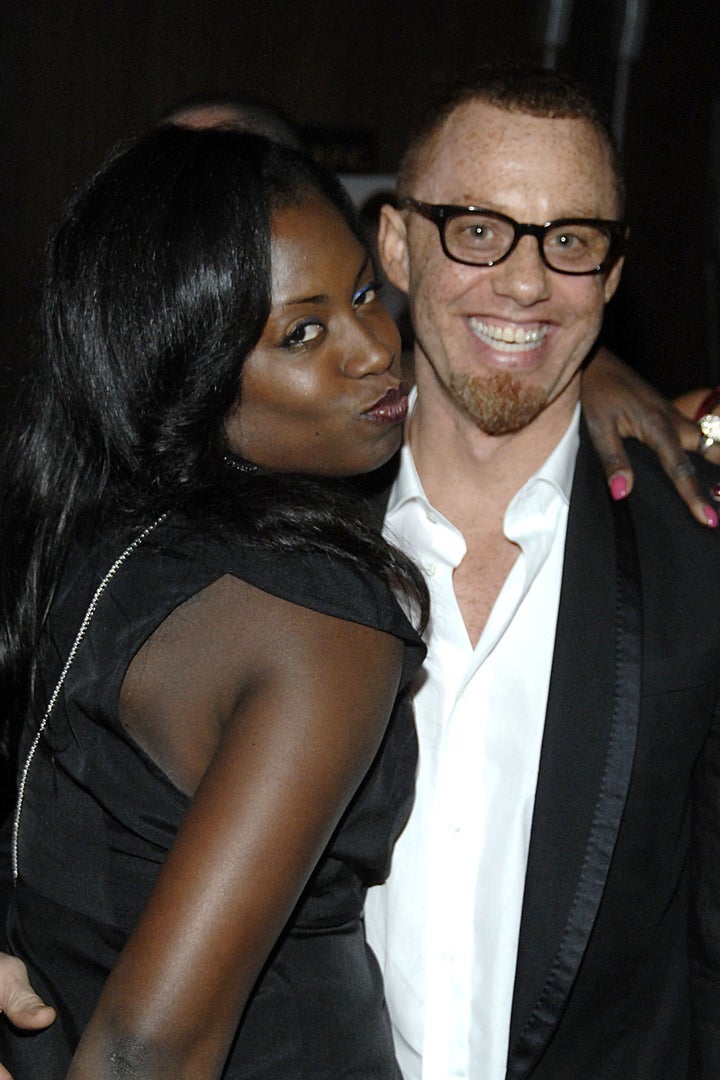
Not to long ago I was taking a break in the back of the salon, (strictly no food allowed on the floor people), and an article in the New York Times caught my eye. Ogilvy and Mather North America announced that their new general market is non-white. "Instead of thinking of discrete segments in a multicultural world," said John Seifert the chief executive. "We're saying the new reality is that it's more of cross cultural world, a mash up of cultures." "Duh! " I thought. "Does that mean black folks can finally get out of that one aisle in the Duane Reade?" Still I have to admit I felt affirmed. It's an attitude I've applied to hair for more than 20 years.
I was born in 1965 into an all black community with a face full of freckles, skin so light I wasn't even considered light-skinned and bright Technicolor red hair. Picture that in the era when the sounds of "Black Power" was being hollered from the rooftops. My race has always been a big ole question mark for people. In 2003, I wrote a book called Hair Rules: The Ultimate Hair Care Guide for Women with Kinky Curly Wavy Hair. When a review came out, the entire thing was based on the assumption that I was a white man. I had my cousin, a much more level headed person than me, respond. A common inquiry on online blogs, threads and natural hair sites goes something like ,"I hear what he's sayin, sounds right in theory but he's white, how would he know?" And while it's irritating, trust me, I get it. This is a group of women that have been marginalized, segmented, marketed to and preyed upon based off their spending power and an assumption of what their hair should be.
It's been a long road to get to the place we are getting to now. Where black women are no long defined by the market but have come to help define it. And where kinky and curly can extend past "African-American texture " to mean a curly haired white woman, a wavy hair haired South Asian sister or a mixed race women with hair going every which way. But child it wasn't easy.
I grew up with the women in my family doing hair in the kitchen. There wasn't as much need for a salon if your cousin or your mama could do some hair, just go to the black hair care spot, buy yourself some royal crown or some of you might be too young to know but 40, 50 yrs ago if you were raised in the country you used lard or lotion to press & curl. Women were defining themselves in the late 60s, early 70s wearing afros, presses, finger waves, puffs and braids.
But then came the corporate 80s influencing a new era in relaxers, conformity, wealth and dynasty. An aisle began to emerge for us in the local chain drug stores. Let's not get it twisted black hair care was always big business but it Now Black women were marching steadfastly into corporate America with that new dark n lovely, optimum, made" just for you" relaxer. Whether your hair could take it or not, every 4-6 weeks put in that perm and march with confidence to that cubicle on the 27th floor.
Thank you lawd for 90s and that unbeweaveable hair down your back! Simply sew it in and re-relax that front section left out around the hairline every 4 weeks and you where good to go for 3 months. Yes it is mine, I bought it. The majority of black women featured in the magazines wore weaves because they were easy to work with, and void of any black hair and make up artist in the fashion industry unitil very late 90s Black models were instructed by their bookers and editors to arrive "hair ready" At the end of the day, kinky hair didn't sell high fashion, beauty or dreams. So the image makers stopped at nothing to make it disappear.
Then a market shift occured, a combination of the U.S. acknowledging it was more diverse and hip hop becoming part of pop culture. It was a cultural awakening. Actors and musicians began replacing supermodels on magazine covers. It was about selling several million units as a songstress and our coveted beauty bibles realized they could sell more magazines -- and hair was as much a testament to individual style as clothes.
No longer were women of color held to an unrealistic style standard dictated by an industry that trafficked in sameness. For black women, that meant more options, freer styles and evolved perceptions of beauty. I have always understood hair and race as a spectrum and the goal of hair Rules was to help celebrate our unique differences. I'm glad Ogilivy and Mathers agree with me.
